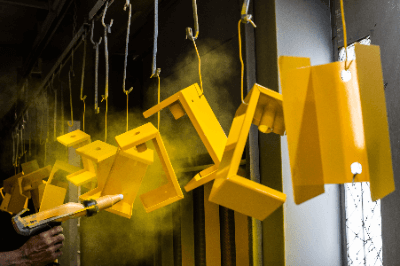What Is Powder Coating?

Powder coating is a method of applying a solid, powdered paint to a substrate. This eco-friendly process excludes solvents, as the pigments, resins, and additives are ground into a fine powder. The absence of solvents, like acetone, not only makes it safer for health and the environment but also allows for the recovery of unused coatings, enhancing cost efficiency.
Uses of Powder Coating
Known for its high durability, flexibility, and excellent rust resistance, powder coating is ideal for products exposed to temperature variations and outdoor environments. It’s particularly popular in industries requiring environmentally conscious solutions, as it doesn’t emit volatile organic compounds (VOCs).
Types of Powder Coating
Powder coatings are categorized into thermoplastic and thermosetting types based on the resin used:
1. Thermoplastic Powder Coatings
These coatings melt and reshape upon heating and solidify when cooled. They’re applied using the fluidized bed method, ideal for corrosion-resistant applications like outdoor materials and pipes.
2. Thermosetting Powder Coatings
These form a coating film through a cross-linking reaction when heated. Applied using the electrostatic powder coating method, they’re used for household appliances, agricultural machinery, and building exteriors.
Methods of Powder Coating
Fluidized bed coating is used for thermoplastic powder coatings, while electrostatic powder coating is for thermosetting types. Each method has unique features and is chosen based on substrate requirements.
Other Information on Powder Coating
Advantages and Disadvantages of Powder Coating
- Advantages: Offers high durability, environmental and human health safety, and cost-effectiveness due to its ability to reclaim unused paint.
- Disadvantages: Requires specialized equipment and is limited in terms of substrate size and heat resistance.